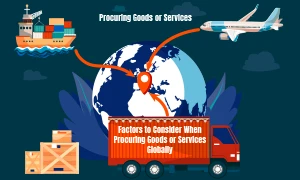
Buyers want consistency, quality, and compliance. Suppliers want long-term partnerships, stability, and growth. Eventually, one factor defines the success of this relationship: effective quality control (QC).
Strong QC systems reduce disputes, improve transparency, and create long-lasting partnerships between suppliers and international buyers. In this blog, we explore how garment QC becomes a bridge of trust and how both sides can leverage it for sustainable growth.
Why Trust Matters in Apparel Sourcing
Strong apparel supply chains are built on trust, which underpins quality, stability, and operational excellence.
- Speed and agility: With Mexico’s nearshoring advantage, buyers expect faster turnarounds. Trust in QC ensures that speed doesn’t compromise quality.
- Shared accountability: A well-defined QC program makes expectations crystal clear, reducing miscommunication between buyers and suppliers.
- Cost efficiency: Fewer reworks, fewer returns, and reduced delays lower total costs while protecting margins.
In short, QC transforms quality from a point of conflict into a point of collaboration.
The QC–Trust Cycle
Trust in apparel sourcing is built step by step. A practical way to think about it is as a cycle:
- Clear Standards → Everyone agrees on expectations.
- Reliable Execution → Factories produce to those standards.
- Consistent Results → QC verifies accuracy at each stage.
- Transparent Data → Both parties share and review inspection results.
- Faster Decisions → Issues are solved with evidence, not opinion.
- Stronger Relationships → Confidence builds season after season.
Each successful cycle compounds trust, leading to stronger partnerships and less friction over time.
How Quality Control Builds Trust in Global Apparel Sourcing
For QC to build trust, clarity and visibility are essential. Both buyers and suppliers must work from the same playbook.
1. Golden Standards Package
A clear benchmark eliminates “gray areas” in quality:
- Tech packs with precise tolerances
- Approved size sets and fit blocks
- Golden samples as a visual and tactile reference
- Defect classification system (critical, major, minor) with sample photos
2. Shared QC Methods
Suppliers and buyers should align on standard practices such as:
- AQL/ISO 2859-1 sampling frameworks
- Lab tests for colorfastness, shrinkage, and seam strength
- Workmanship inspections for SPI, seam consistency, and embellishment adhesion
3. Strong Governance & Communication
Pre-production meetings to align on expectations
- Inline inspection updates with corrective loops
- Escalation processes with corrective action requests (CARs) closed within days
Trust is built when both sides see that quality isn’t subjective; it is measured, documented, and agreed upon.
The Three-Layer QC Model in Mexico
Mexico’s nearshoring advantage enables apparel buyers to implement faster, more efficient quality control (QC) cycles compared to Asia. Shorter transit times and closer supplier relationships make it possible to detect and correct issues quickly. A three-layer model works best:
A. Pre-Production QC (Prevention First)
- Inspect inbound fabrics and trims
- Approve pre-production samples (PP samples)
- Validate line setup and operator training
Trust outcome: Buyers know risks are addressed before bulk production.
B. Inline Inspections (DUPRO)
- Conduct inspections at 20–30% and 60–70% of production
- Check for workmanship issues, seam failures, or labeling errors
- Implement same-week corrections thanks to short transit times
Trust outcome: Problems are fixed while the line is active and not discovered at the warehouse.
C. Final Inspection (PSI)
- AQL sampling by lot, size, and color
- Verify labeling, packaging, and carton compliance
- Confirm legal labeling requirements under USMCA and U.S. regulations
Trust outcome: Both parties have documented proof of quality before shipment leaves Mexico.
How Can QC Transform from Policing to Partnership?
Traditional QC often felt like policing where inspectors pointed out mistakes after production was complete. Modern garment QC flips this approach by creating a partnership between suppliers and buyers:
- Joint Kaizen Workshops → Suppliers and buyers collaborate on continuous improvement.
- Operator Training Programs → Ensuring workers understand defect-prone areas and avoid repeat issues.
- Defect Trend Sharing → Buyers share data insights, helping suppliers fix root causes proactively.
- Preferred-Vendor Programs → Suppliers with strong QC records secure higher volumes and better terms.
This collaborative model transforms QC from a cost center into a mutual investment in quality and brand reputation.
The KPIs That Drive Trust
To foster transparency, buyers and suppliers must align on measurable KPIs. Setting shared benchmarks ensures both sides track success objectively:
| KPI | Why It Builds Trust | Target |
|---|---|---|
| Inline Defect Rate | Identifies issues early | Trending down quarterly |
| First-Pass Yield (FPY) | Measures % of units passing QC without rework | 95%+ for basics |
| AQL Fail Rate | Reduces shipment rejection risk | <2% over 90 days |
| CAR Closure Time | Speed of resolving quality issues | ≤ 5 business days |
| Returns per 1,000 Units | Reflects real-world quality | Decreasing trend season over season |
By sharing these KPIs in real time, buyers gain confidence that suppliers can deliver consistent results.
How Do Digital QC Tools Enhance Transparency and Trust?
Digital QC tools are transforming the way Mexican garment suppliers and global buyers manage quality control. By replacing manual reports and delayed updates with real-time data sharing, these tools create transparency, reduce miscommunication, and strengthen buyer-supplier relationships.
Here’s how digital solutions enhance visibility and build trust:
Mobile QC Apps with Photo Evidence
Inspectors can instantly capture images of defects and upload them for immediate review. This allows buyers to see issues as they occur, reducing disputes and improving response times.
Cloud-Based Dashboards
Both buyers and suppliers can access a centralized QC dashboard that displays real-time inspection data, KPIs, and pass/fail rates. This ensures everyone works with the same information, minimizing misunderstandings.
Digital Defect Heatmaps
Heatmaps highlight defect trends by style, lot, or operator, helping suppliers pinpoint recurring problems and implement corrective actions quickly.
Traceability Systems
Advanced QC platforms link rolls, lots, and POs to specific inspection reports, giving buyers complete product traceability from production to shipment.
By ensuring everyone sees the same data at the same time, digital QC tools eliminate uncertainty and create a collaborative environment where buyers and suppliers work toward the same quality goals.
How Do Compliance and ESG Go Beyond QC to Build Trust?
Trust goes beyond the garment itself. Buyers increasingly expect ethical and sustainable sourcing.
- Labor compliance audits under USMCA’s labor chapter
- Environmental checks for waste handling and water discharge
- Health and safety inspections to protect workers
By linking QC with social compliance and ESG, buyers show they value not only products but also people, deepening supplier trust.
How Do Contracts and SLAs Strengthen Buyer-Supplier Trust?
Clear and well-structured contracts and Service Level Agreements (SLAs) play a critical role in building long-term trust between Mexican garment suppliers and global buyers. When expectations are transparent and responsibilities are clearly defined, there is less room for conflict, miscommunication, or financial disputes.
Here’s how contracts reinforce trust in garment QC partnerships:
- Quality Annex with AQL Tables and Acceptance Criteria
Including a dedicated quality annex ensures that both parties agree on the Acceptable Quality Limits (AQL) and the standards that products must meet before shipment. - Defined Rework or Chargeback Terms
Contracts should specify who bears the cost of rework, repairs, or chargebacks if quality issues arise, avoiding disagreements later. - Latent Defect Windows
Establishing clear timelines for identifying after-market defects gives buyers confidence that suppliers stand behind their quality even after delivery. - Data-Sharing and Reporting Agreements
Outlining how inspection reports, defect data, and QC KPIs will be shared ensures complete transparency throughout the production cycle.
Clarity in contracts prevents disputes and protects both parties.
What Are Mexico’s Unique Advantages for QC?
Mexico has become a strategic hub for garment manufacturing and quality control, offering unique benefits that make it a preferred partner for global apparel buyers. Its geographical location, trade advantages, and skilled workforce give suppliers a competitive edge in meeting international quality standards.
Here’s why Mexico stands out for effective garment QC:
- Proximity for Faster Corrective Actions
Being close to the U.S. allows same-week corrective measures when issues arise. Suppliers can respond quickly to QC findings, reducing delays and improving on-time deliveries. - Time Zone Alignment for Real-Time Collaboration
Mexico’s alignment with U.S. and EU time zones enables seamless communication, faster approvals, and real-time quality monitoring during production. - USMCA Trade Benefits
Under the United States-Mexico-Canada Agreement (USMCA), garment exports qualify for duty-free status when rules of origin are met, giving buyers significant cost savings and reducing supply chain complexities. - Skilled Apparel Clusters
Regions like Puebla, Yucatan, and Jalisco have decades of expertise in apparel production, providing a highly trained workforce capable of meeting strict international QC standards.
By utilizing these unique advantages, Mexican garment suppliers can ensure faster turnaround times, consistent product quality, and greater transparency across the production cycle. These strengths position Mexico as a reliable, competitive, and trusted partner for global brands seeking efficiency, compliance, and long-term collaboration.
For deeper insights check out our detailed guide to understand why apparel quality control is critical when sourcing in Mexico?
Build Trust Through Garment QC with SIXM
Garment QC has evolved beyond meeting basic specifications; it is now a strategic driver of trust, transparency, and long-term partnerships between suppliers and global buyers. By embracing clear standards, adopting digital tools, and prioritizing collaboration, Mexican garment suppliers can confidently position themselves as reliable partners for global buyers.
Learn more about how garment quality control in Mexico differs from China and other markets.
At SIXM, we specialize in providing comprehensive Quality Control Solutions that help brands and suppliers streamline their quality control processes, enhance supply chain visibility, and build stronger, trust-driven relationships.
Partner with SIXM today and make your apparel sourcing in Mexico efficient, transparent, and reliable.

